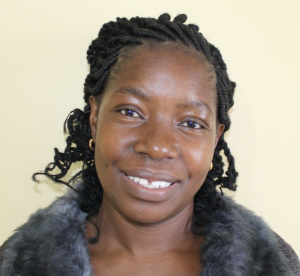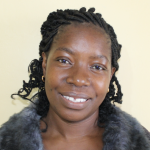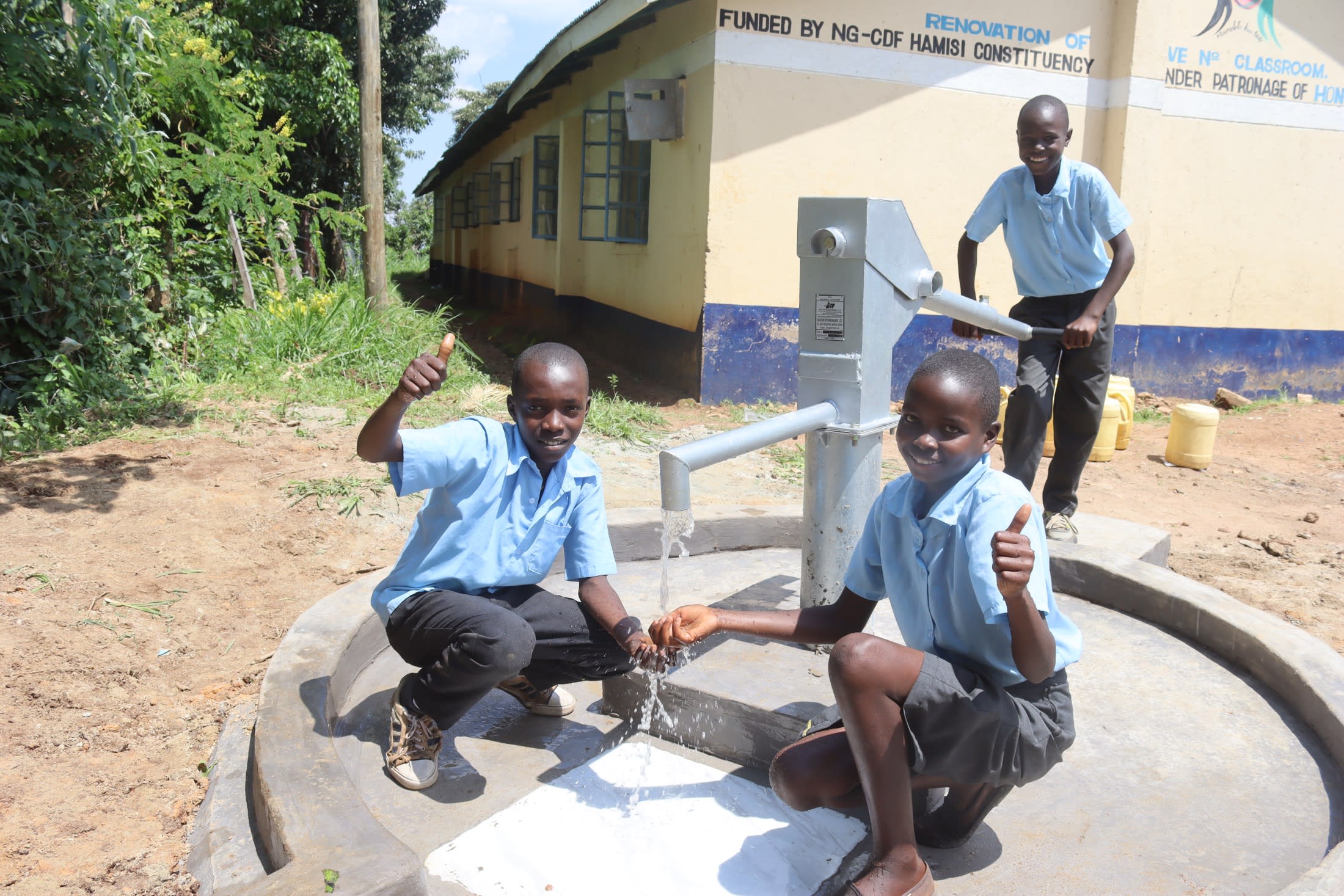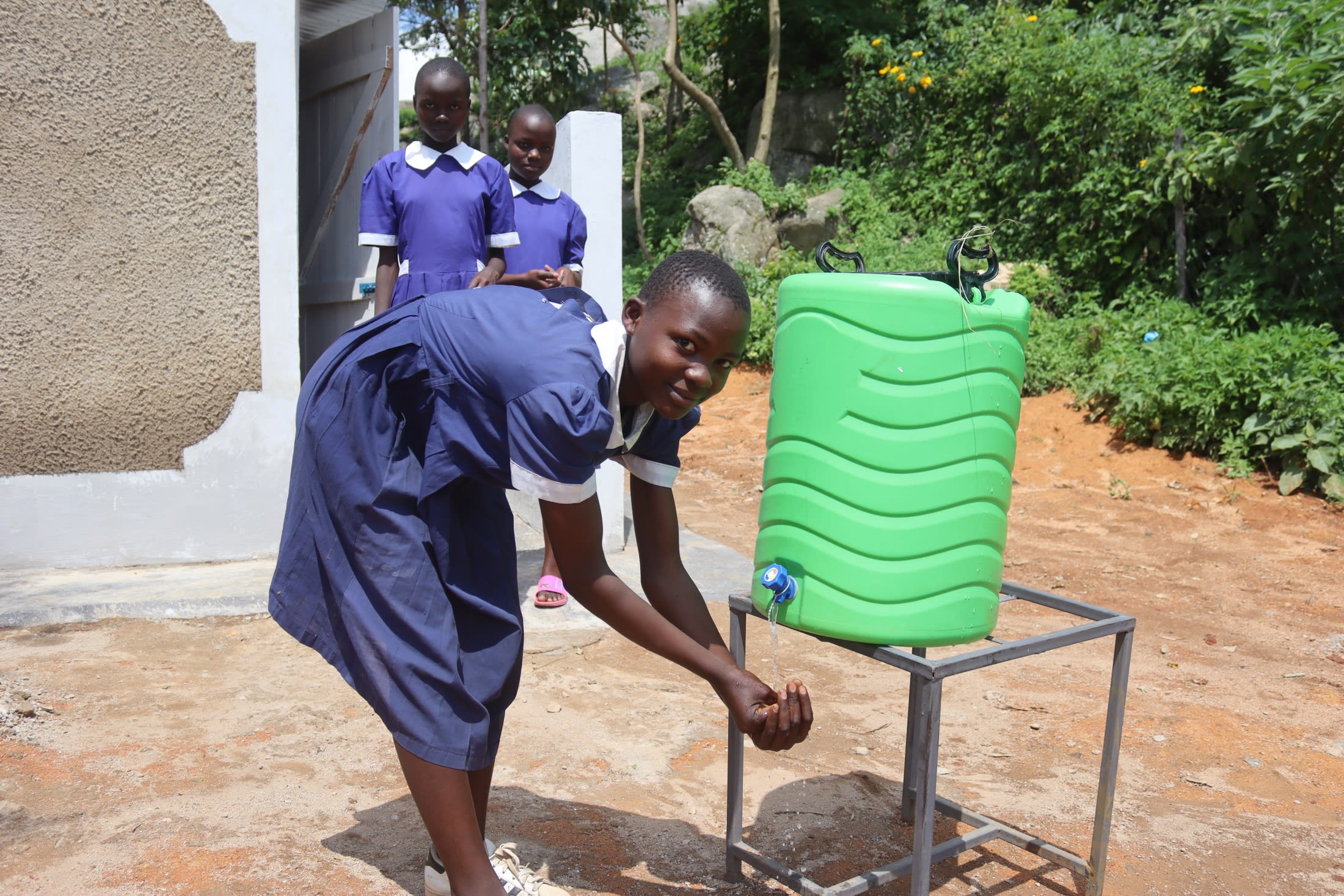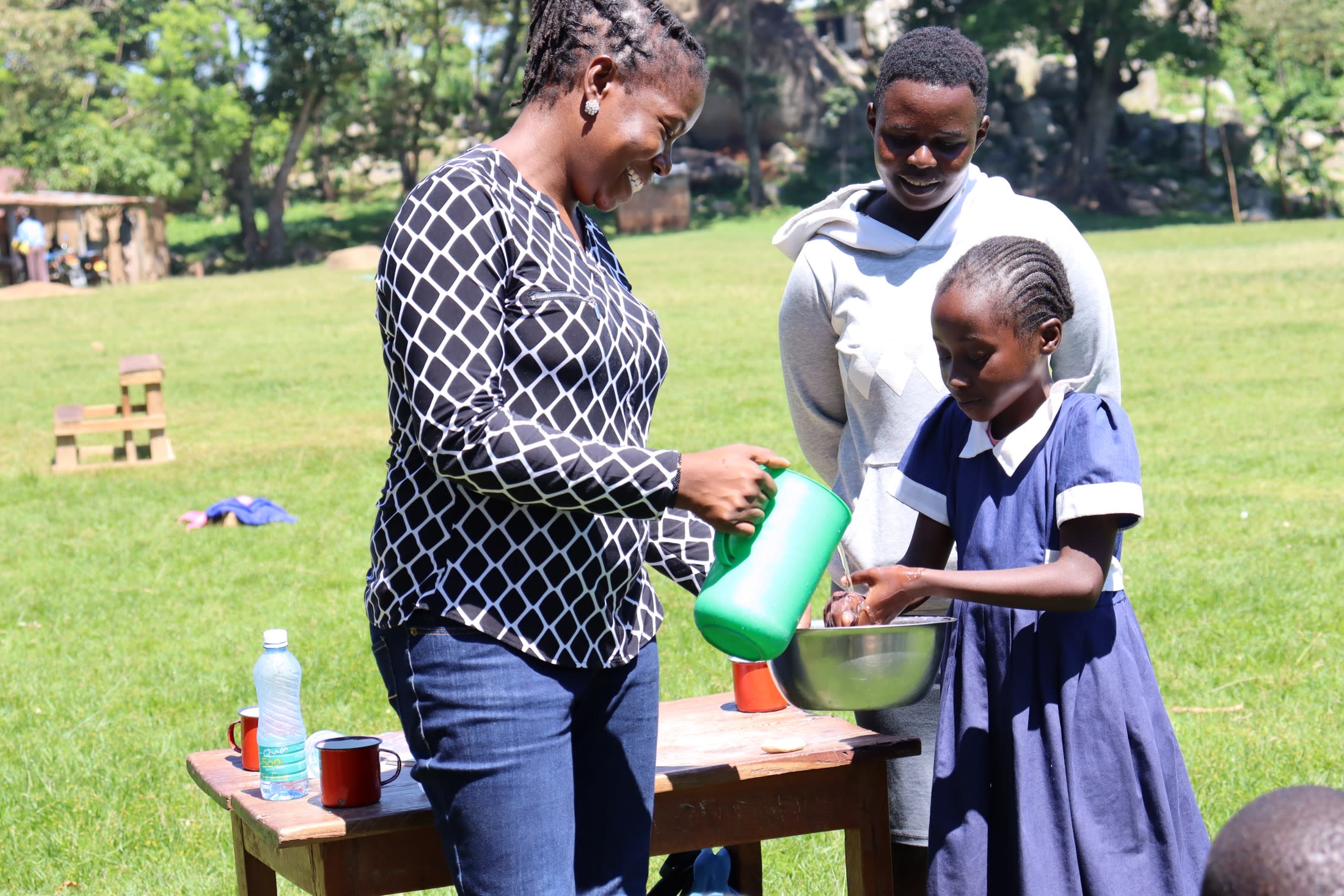A 5000-liter rainwater harvesting tank is the only water source at Jeblebuk Primary School, but since it only fills when it rains, it can never provide enough water to meet the needs of the 385 students and 13 staff members. Even when there is water in the tank, it is quickly exhausted after only a few days, leaving the school empty-handed.
"As teachers, our joy is to have [an] excellent performance from our students, but unfortunately, their result is not only limited to our efforts but also the learning environment. Our school lacks a reliable water source, the sanitation facilities are filthy, and handwashing stations are not enough," said 35-year-old teacher Vincent Iganza, shown below near the school's small water tank.
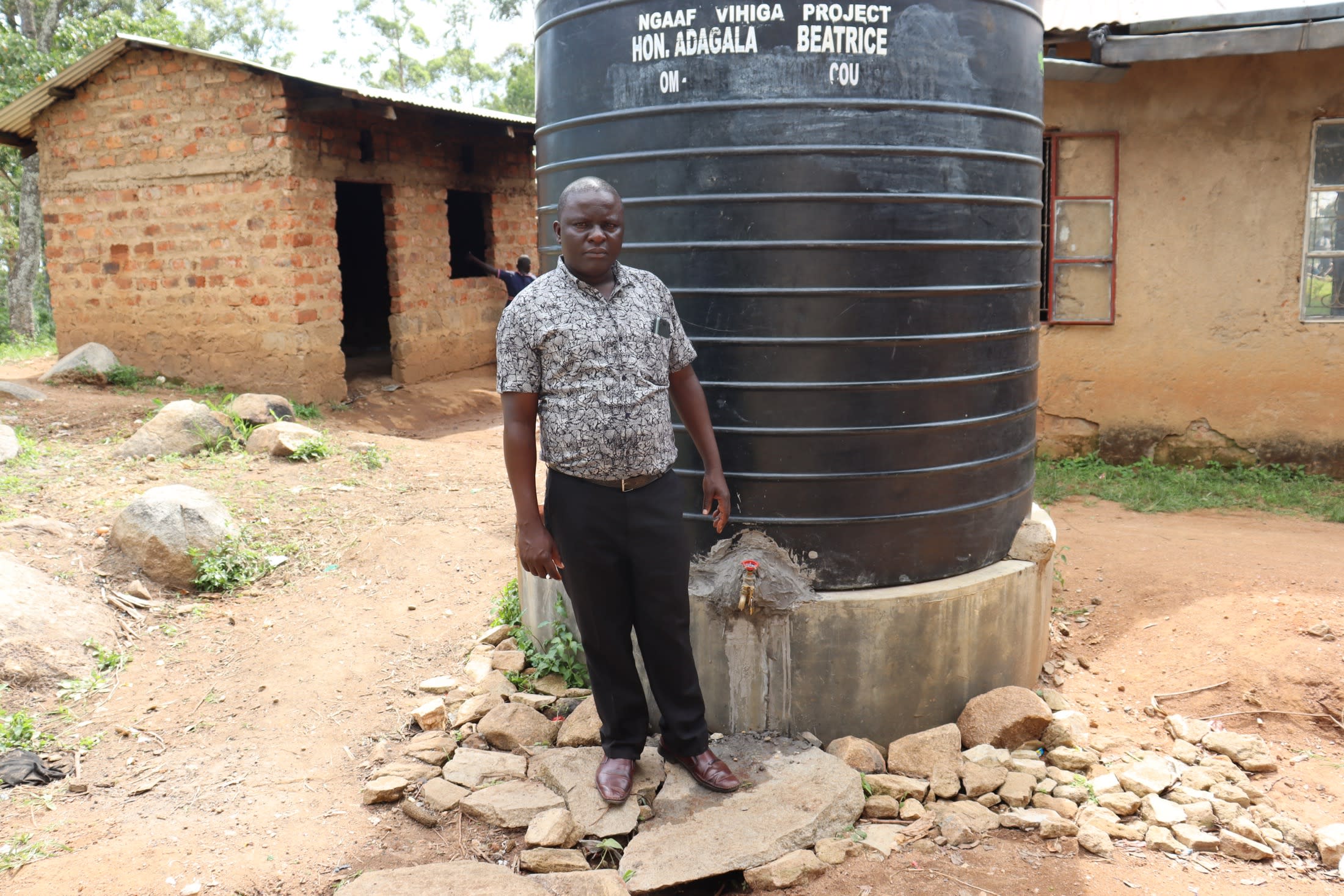
When the tank is dry, students must bring water from home, which means collecting water from questionable sources. The water containers used are visibly dirty, which implies that the contents are likely contaminated too.
"Stomachache and diarrhea are rampant in the school, and cases of absenteeism are high due to water-borne and hygiene-related illnesses," said our field officer Christine Masinde.
"By the time students get to school, they are already tired from carrying books and water from home. As a result, their concentration in class is affected, and in the long run, they perform poorly academically," Christine continued.
But the water students bring from home only lasts through the morning, so they are sent out of class after lunchtime to collect more water from a protected spring miles away from the school, missing out on valuable learning time.
"Time is wasted going to the spring to fetch water to be used in school instead of being in class. I hardly have time to play during break time because I have to rush to get water from the spring. The sooner we get a permanent water solution, the better for us," said 13-year-old student Juliet M., shown below collecting water at the spring.
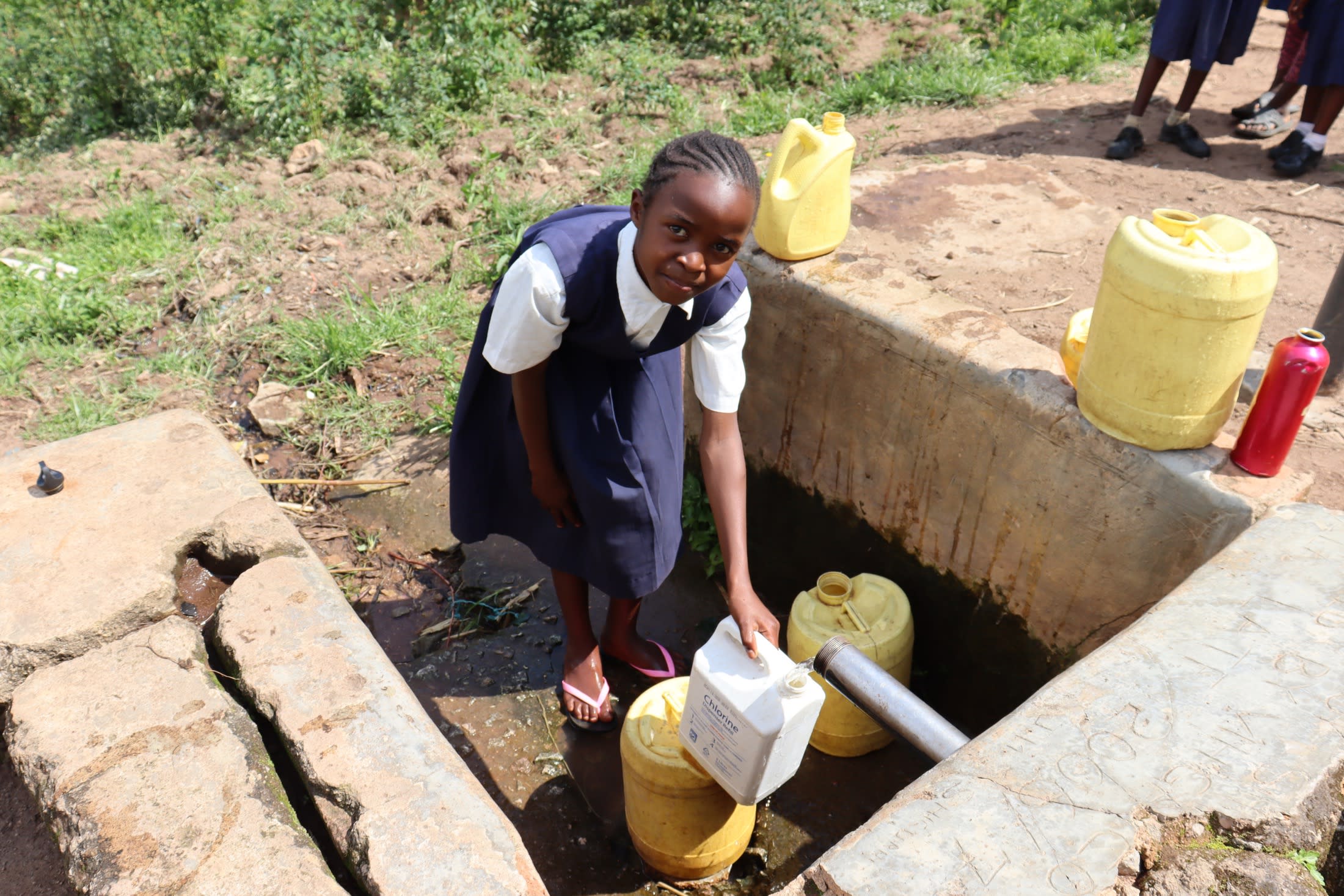
The staff and students need a reliable, nearby water source that will make it easy for students to access sufficient, safe water quickly to save their time and energy for learning.
"We pray and hope that these issues will be solved so that our school can shine academically," concluded Mr. Iganza.
What We Can Do:
New Well
We conducted a hydrogeological survey at this school and the results indicated the water table beneath it is an ideal candidate for a borehole well. Due to a borehole well's unique ability to tap into a safe, year-round water column, it will be poised to serve all of the water needs for this school's large population, even through the dry months.
The school will help collect the needed construction materials such as sand, rocks, and water for mixing cement. They will also provide housing and meals for the work team, in addition to providing local laborers. We will complement their materials by providing an expert team of artisans and drilling professionals, tools, hardware, and the hand-pump. Once finished, water from the well will then be used by the school's students and staff for drinking, handwashing, cooking, cleaning, and much more.
Handwashing Stations
The student health club will oversee the two new handwashing stations we will provide, and make sure they are kept clean and in working condition. The club leaders will fill the handwashing stations with water daily and make sure they are always supplied with a cleaning agent such as soap or ash.
VIP Latrines
We will construct two triple-door latrine blocks using local materials that the school will help gather. Three doors will serve the girls and three doors will serve the boys. All of these new latrines will have cement floors that are designed to be easy to use and to clean. And with a borehole right on school property, there should be enough water to keep them clean.
Training on Health, Hygiene, COVID-19, and More
We will hold a one-day intensive training session with students, teachers, and parents. This training will cover a wide range of topics including COVID-19 symptoms, transmission routes, and prevention; personal and environmental hygiene; and the operation and maintenance of the borehole, latrines, and handwashing stations. There will be a special emphasis on handwashing.
Our team of facilitators will use a variety of methods to train, including participatory hygiene and sanitation transformation, and asset-based community development. We will initiate a student health club, which will prepare students to lead other pupils into healthy habits at school and at home. We will also lead lectures, group discussions, and provide illustrative handouts to teach health topics and ways to promote good hygiene practices within the school including handwashing and water treatment. We will then conduct a series of follow-up trainings before transitioning to our regularly scheduled support visits throughout the year.
We and the school strongly believe that all of these components will work together to improve standards at this school, which will help lead to better student academic performance and will help unlock the opportunity for these students to live better, healthier lives.






 Borehole Well and Hand Pump
Borehole Well and Hand Pump
 Rehabilitation Project
Rehabilitation Project












